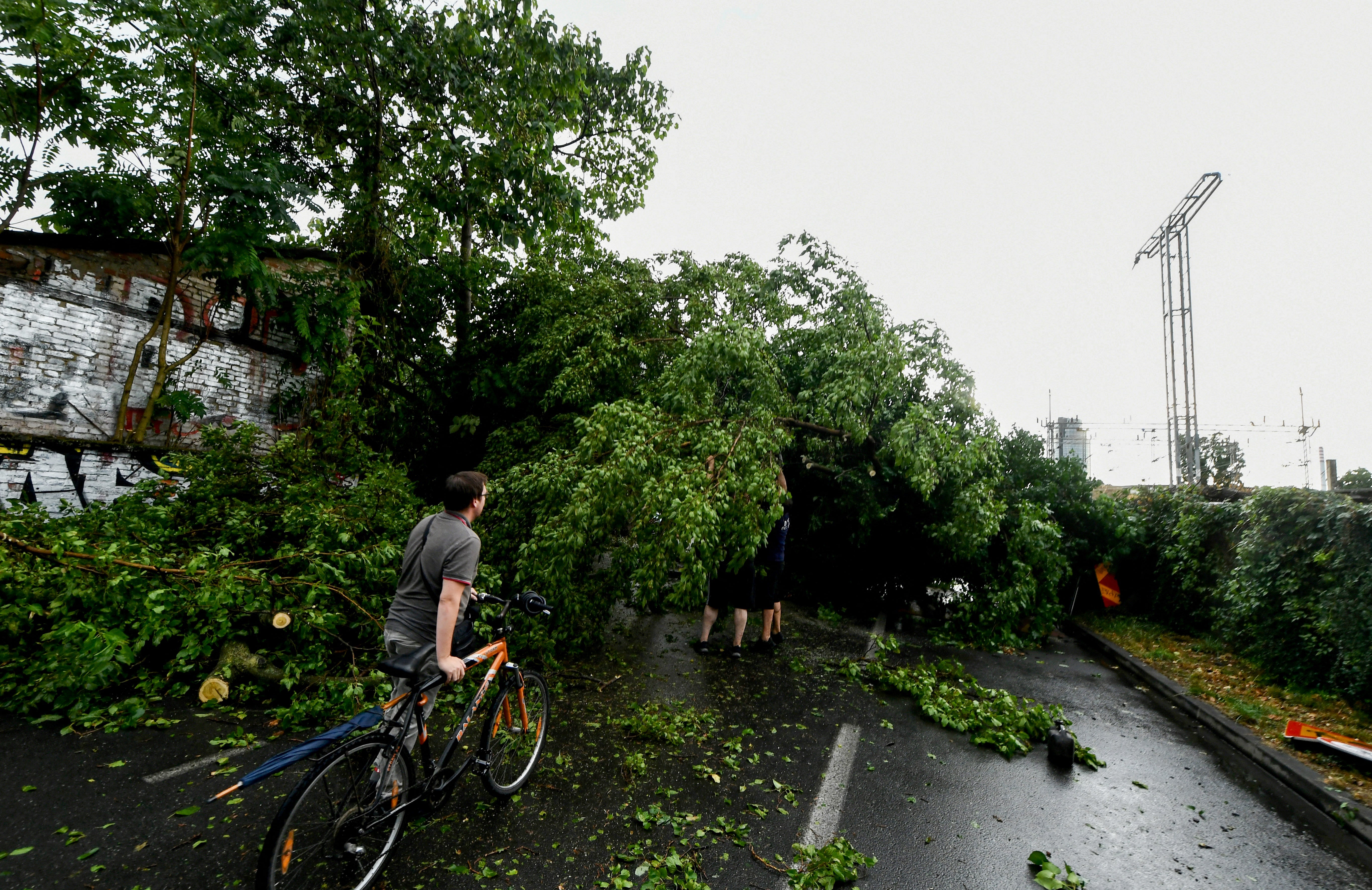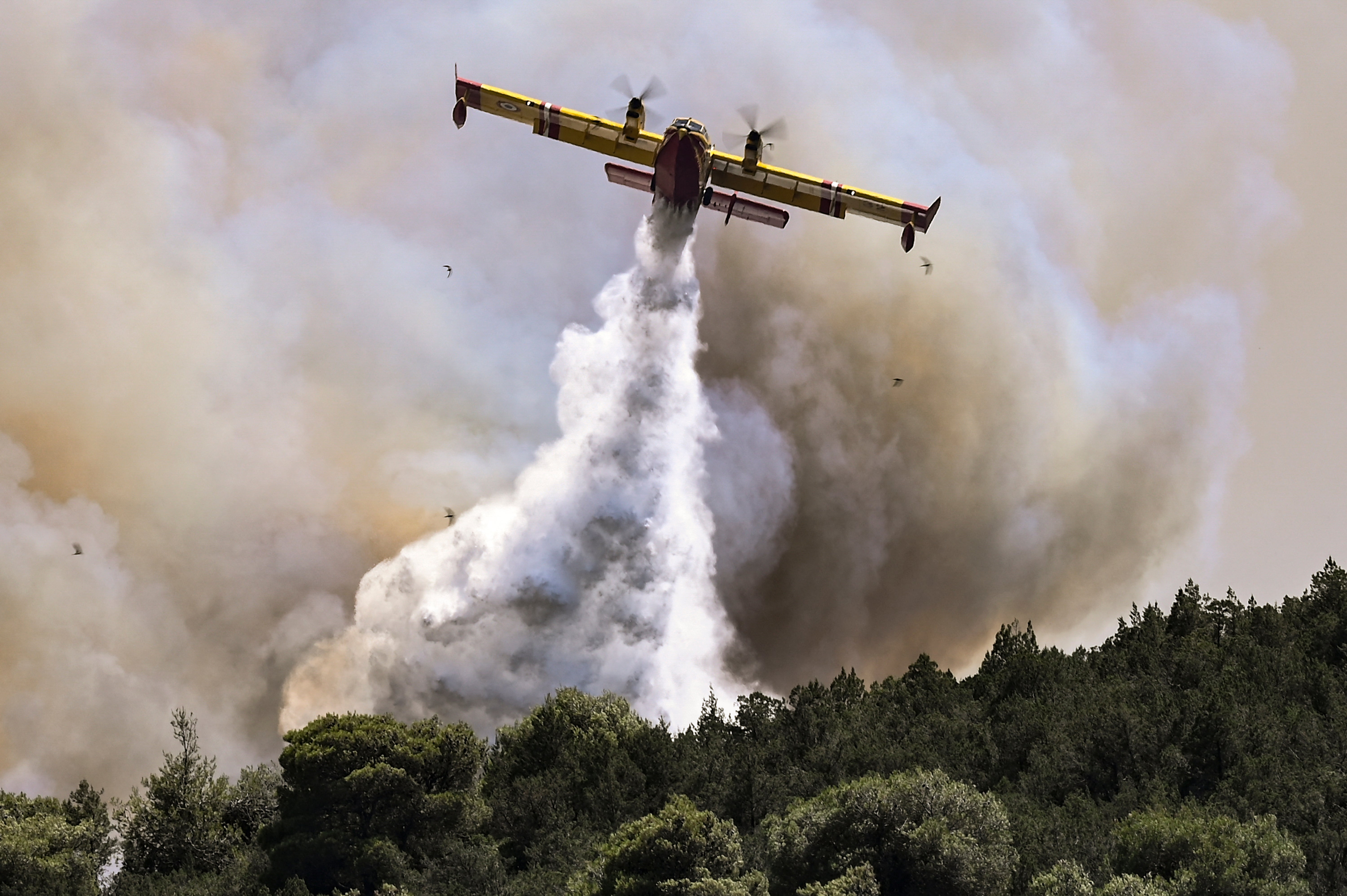European heatwave - latest updates as red alerts and record temperatures continue
Authorities warn of heightened risk of fires from today
Your support helps us to tell the story
From reproductive rights to climate change to Big Tech, The Independent is on the ground when the story is developing. Whether it's investigating the financials of Elon Musk's pro-Trump PAC or producing our latest documentary, 'The A Word', which shines a light on the American women fighting for reproductive rights, we know how important it is to parse out the facts from the messaging.
At such a critical moment in US history, we need reporters on the ground. Your donation allows us to keep sending journalists to speak to both sides of the story.
The Independent is trusted by Americans across the entire political spectrum. And unlike many other quality news outlets, we choose not to lock Americans out of our reporting and analysis with paywalls. We believe quality journalism should be available to everyone, paid for by those who can afford it.
Your support makes all the difference.Firefighters battled a blaze in Rhodes as a new heatwave loomed over Greece, threatening to stoke tinderbox conditions across the country.
Greek meteorological service had warned of a heightened risk of fires from Thursday, as the country recovered from the first major heatwave of the summer.
A second heatwave was forecast to start on Thursday, with temperatures exceeding 40 degrees Celsius (104 degrees Fahrenheit) in some areas, and rising further on Friday to a maximum of 44C.
Thousands have also been evacuated in the Canary Islands and Switzerland in recent days, as southern Europe is gripped by ongoing wildfires and extreme heat caused by the fossil-fuel-driven climate crisis.
Fires are common in Greece, but hotter, drier and windy summers have turned the Mediterranean into a wildfire hotspot in recent years.
Temperature records were shattered in Rome and Catalonia on Wednesday as most of Italy’s big cities were placed under a red alert.
A powerful storm sweeps Croatia and Slovenia after days of heat, killing at least 4 people
A powerful storm with strong winds and heavy rain hit Croatia and Slovenia yesterday, killing at least four people and injuring several others, police and local media outlets said.
The storm was the second in two days to sweep over the two countries following a string of extremely hot and dry days. Elsewhere in Europe, a heat wave caused wildfires and public health warnings.
Two men died in Croatia's capital, Zagreb, after they were hit by falling trees, Croatian police said. A 50-year-old man was struck while outside in the street, and a 48-year-old man was in his car, a police statement said. Earlier, emergency doctor Ljupka Hitrova told the official Hina news agency that the two victims had multiple head injuries.
The civil protection service in eastern Croatia reported that one person died when a tree fell on their car in the town of Cernik.
Elsewhere in Zagreb, a 36-year-old man was severely injured when a construction crane collapsed, the police statement said.
The storm suddenly darkened the sky and brought blinding rain, flash floods and winds across Zagreb starting at about 4pm. It halted the city's transportation, caused power outages and left streets blocked with fallen trees.

EU sends firefighters to Greece as blaze reaches doorsteps of residents
Firefighting aircraft and ground crews from other countries headed to Greece yesterday to help battle wildfires that have intensified as a heatwave baked much of southern Europe in temperatures above 40C.
In a round-the-clock battle to preserve forests, industrial facilities and vacation homes, evacuations continued for a third day along a highway connecting the capital to the southern city of Corinth.
In the town of Mandra, 25km west of Athens the flames reached doorsteps of residents before the Fire Service personnel did.
Resident Varvara Paraskevopoulou described fleeing the fire on Tuesday and then returning to help residents trying to protect their properties themselves.
"We extinguished what we could by ourselves and managed to save some homes. As you'll see further up, three or four houses - residences and storage spaces - were burnt completely," Ms Paraskevopoulou told AP.
Firefighting teams from Poland, Romania and Slovakia were due in Greece and Israel pledged to send two firefighting planes, adding to the four from Italy and France that were already operating outside Athens.
Sardina reaches 46C as Italy issues red alert for 23 cities
Most of Italy's big cities have been placed under a red alert which means the heat poses a threat to everybody and not just the vulnerable.
It comes as the island of Sardinia reached a high of 46C on Wednesday afternoon.
Local media have called it the “settimana infernale” - or “week of hell”.
NASA climate experts and leaders to meet Thursday
NASA will assmble climate experts and leaders together to discuss the extreme weather events.
It will include NASA administrator Bill Nelson, NASA’s chief scientist and senior climate adviser Kate Calvin, the Ocean Ecology Laboratory and Goddard Space Flight Center’s chief Carlos Del Castillo.
Italian A&E has highest daily numbers since COVID
There has been an uptick of people attending hospital in Italy for heat-related problems.
In the Lazio region, there was a 20 per cent increase in medical emergencies today compared to last year.
Between 15 per cent and 25 per cent of all emergency admissions across Italy were related to heat.
The highest daily number of patients since the 2020 COVID pandemic were admitted to Cardarelli hospital in Naples yesterday.
The hospital said: "Over the last nine days, the average has been 200 patients a day... an increase of around 30 per cent in the normal number of admissions."
British Embassy warns Brits on holiday in Greece
The British Embassy has tweeted a link to travel advice for Brits abroad.
It comes as Greece battles wildfires that have been burning for days.
The British Embassy in Athens tweeted: "Are you currently in Greece? Please be aware that a heatwave is expected from tomorrow up until Sunday.
"Greek authorities are still battling wildfires, with large fronts in the regions of Attica, Corinth, Viota and the island of Rhodes."
EU sends firefighters to Greece as wildfires rage
Firefighters from across the European Union are being sent in to tackle the wild fires that have been burning for three days.
Central and southern parts of Greece are predicted to see temperatures reach 44C by the end of the week.
Combined with gale-force winds, this has helped create fast-moving wilfires around the capital, Athens.

Fires rage in Greece with another spike in temperatures expected
Fires are raging across Greece destroying forests on Rhodes and gutting homes close to Athens as a new heatwave loomed and threatened to further stoke tinderbox conditions across the country.
Firefighters backed with air water bombers battled a resurgence of flames west of Athens, fresh evacuation orders were issued on Wednesday for three areas threatened by encroaching flames. On the island of Rhodes, authorities sent reinforcements to combat a fire which erupted in a densely wooded mountainous area and ordered the evacuation of three villages as a precaution.
Four aircraft sent from Italy and France joined firefighting efforts on Wednesday, authorities said. Firefighters across the country, boosted by crews from Romania, Poland and Slovakia, have been deployed to help battle the blazes.
Temperatures could climb to 43C on Thursday, forecasters said, as the fresh another bout of extreme temperatures begins. “Conditions are extreme, and are likely to be so for another week,” Kostas Tsigas, head of the fire brigade officers association, told Greece’s SKAI TV.

Fires rage in Greece with another spike in temperatures expected
Parts of Italy see the thermometer hovering around 46C as Greek forecasters say the country will see more extreme heat on Thursday and Friday
Has El Nino really kicked in yet or will its effect increase over the coming year?
Dr Akshay Deoras, meteorologist at the University of Reading, said: “El Niño is still weak and in its early stages of development. Its effect on the global weather patterns will become more robust in the coming months.
“Heatwaves are common in the northern hemisphere at this time of year. However, the temperatures we are expecting in parts of southern Europe in the coming days are what we normally get in the tropical deserts or tropical countries such as India, Pakistan or the Middle East during summer.
“The simultaneous occurrence of heatwaves in different regions of the world as well as their forecasted intensity fits well with the anticipated impact of climate change on global temperatures.”
Weather is ‘exactly as scientists predicted
Dr Melissa Lazenby, Senior Lecturer in Climate Change at the University of Sussex, said: “What is going on right now in the northern hemisphere? Exactly what climate scientists have been predicting, warmer and more extreme conditions due to anthropogenic warming of the planet.
“The northern hemisphere is experiencing a combined effect of both natural and anthropogenic climate change resulting in extreme heat over 3 NH continents. There is a developing El Nino event as well as the additional warming from human emissions therefore resulting in abnormally warmer temperatures than without human emissions.
“Current conditions of the atmosphere over Europe, the US and Asia have high-pressure systems dominating those regions that are as a result experiencing heatwave conditions. There are also anomalously warm sea surface temperatures (SST’s) in the northern hemisphere this summer which are additionally contributing to heatwave conditions experienced over land.”




Join our commenting forum
Join thought-provoking conversations, follow other Independent readers and see their replies
Comments